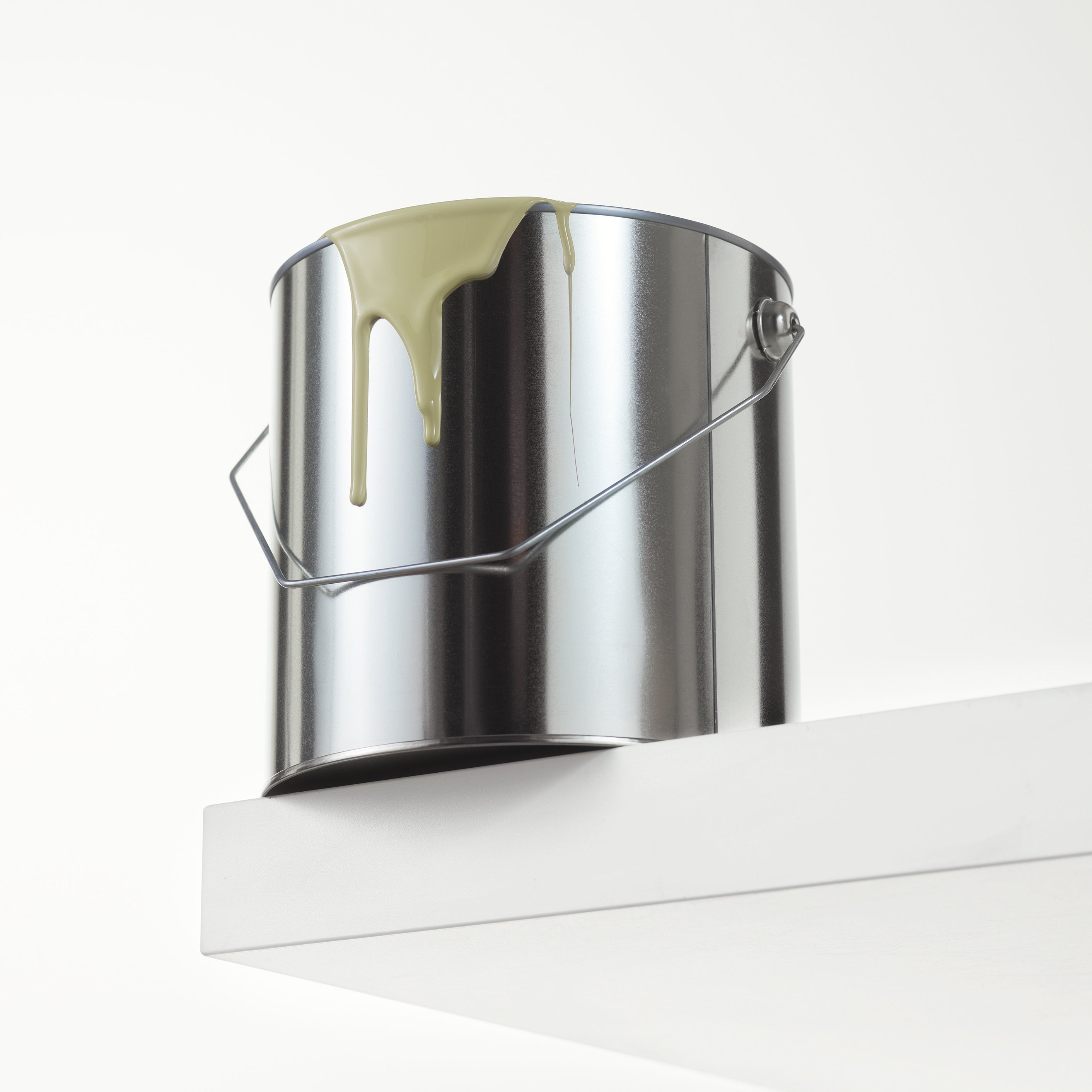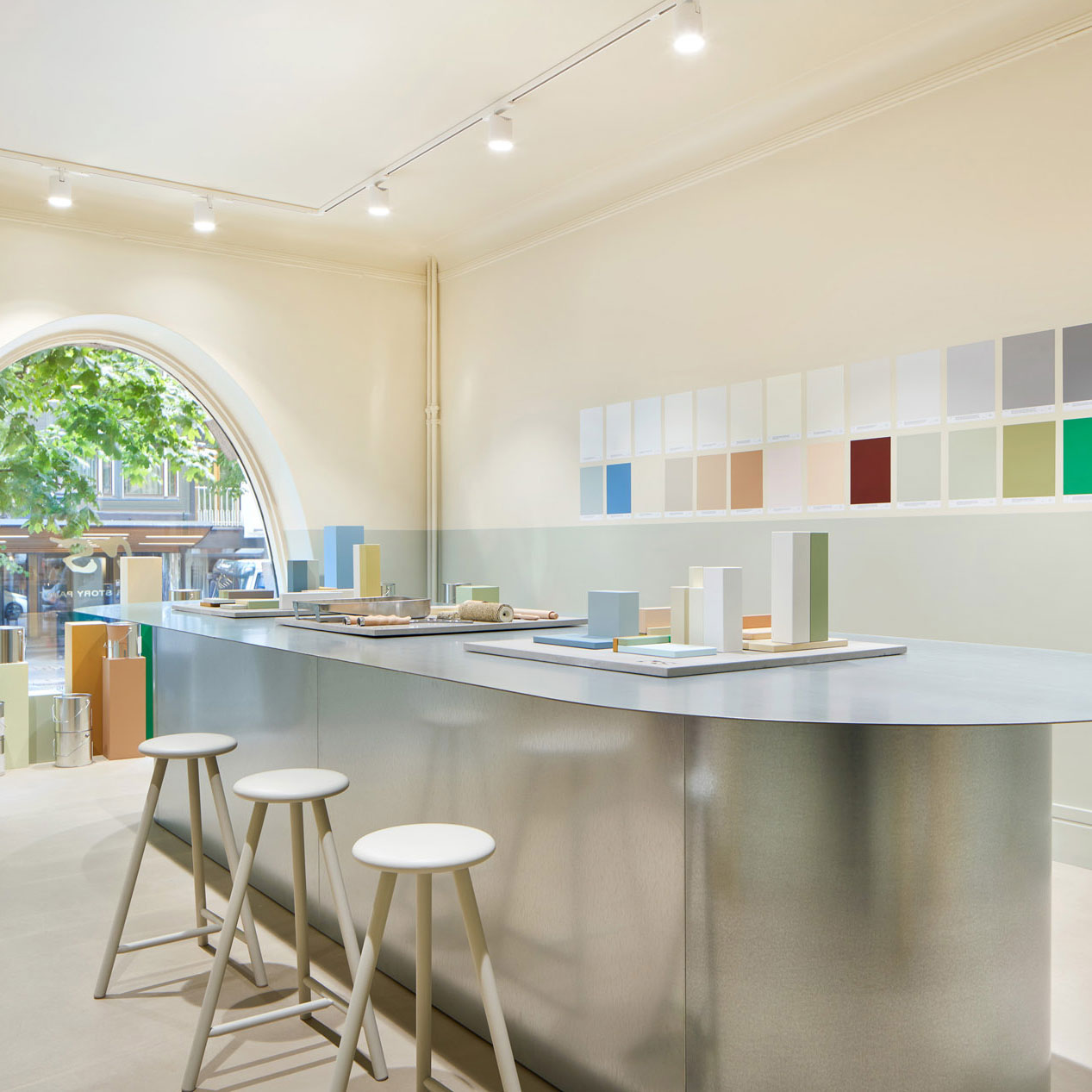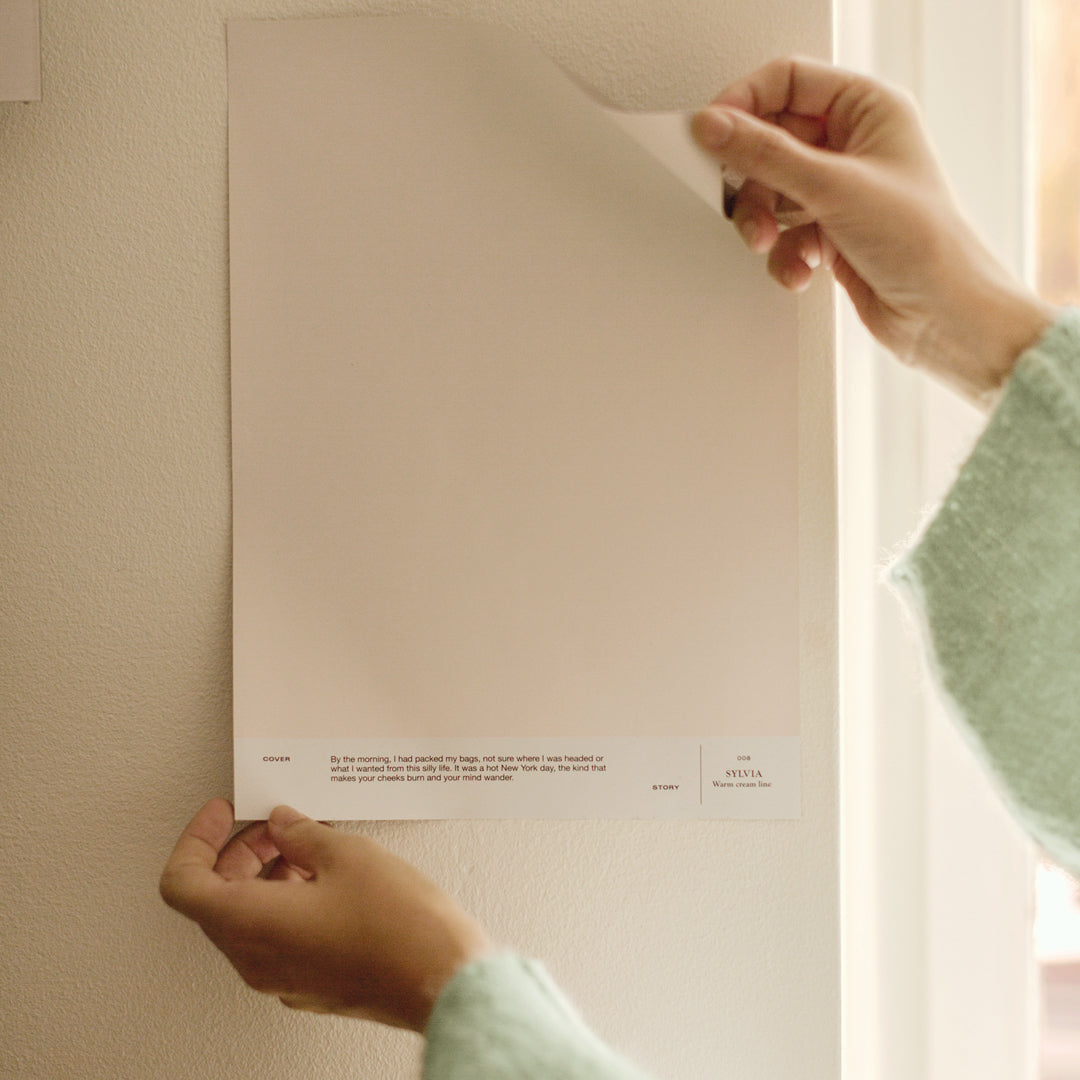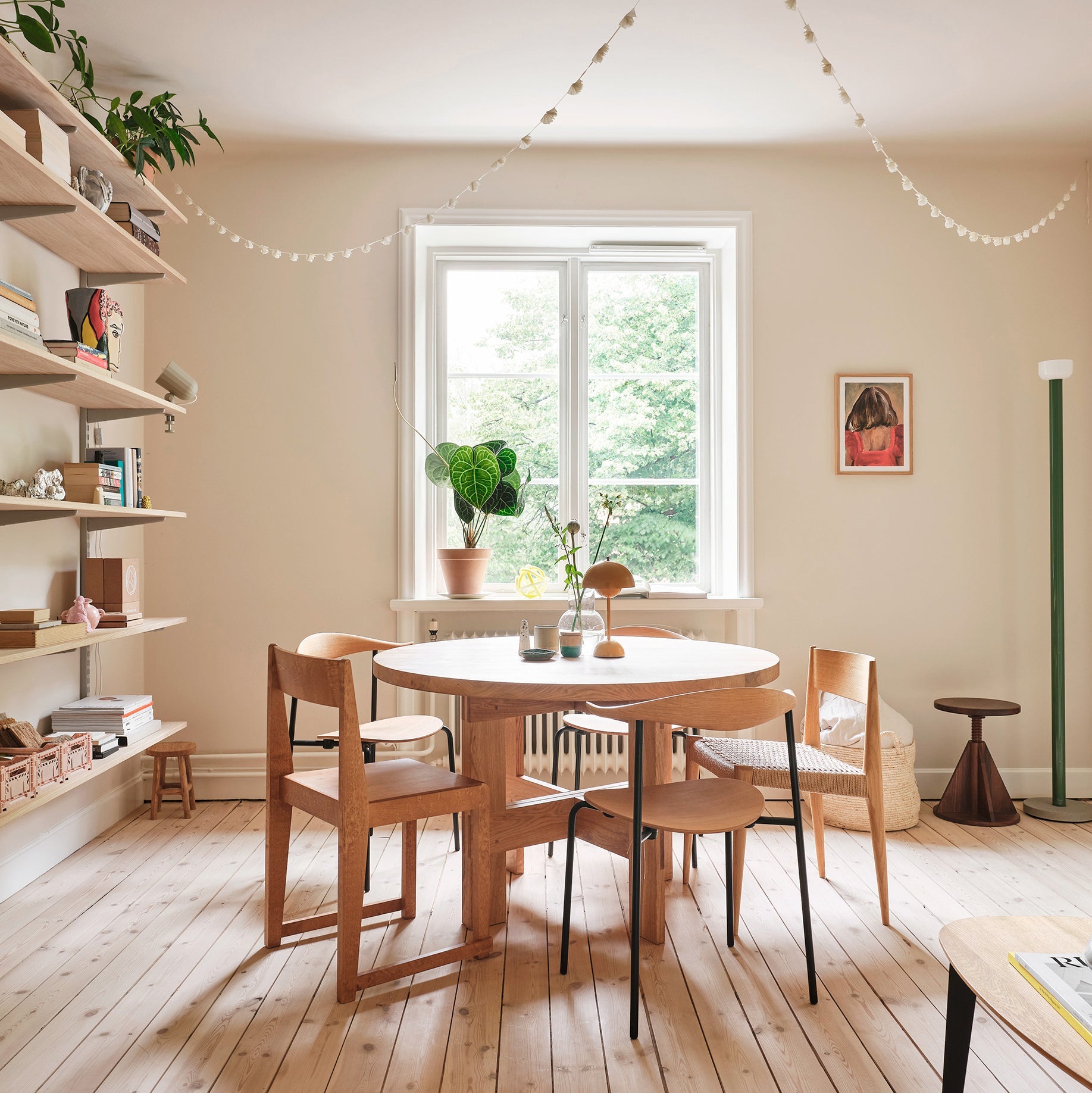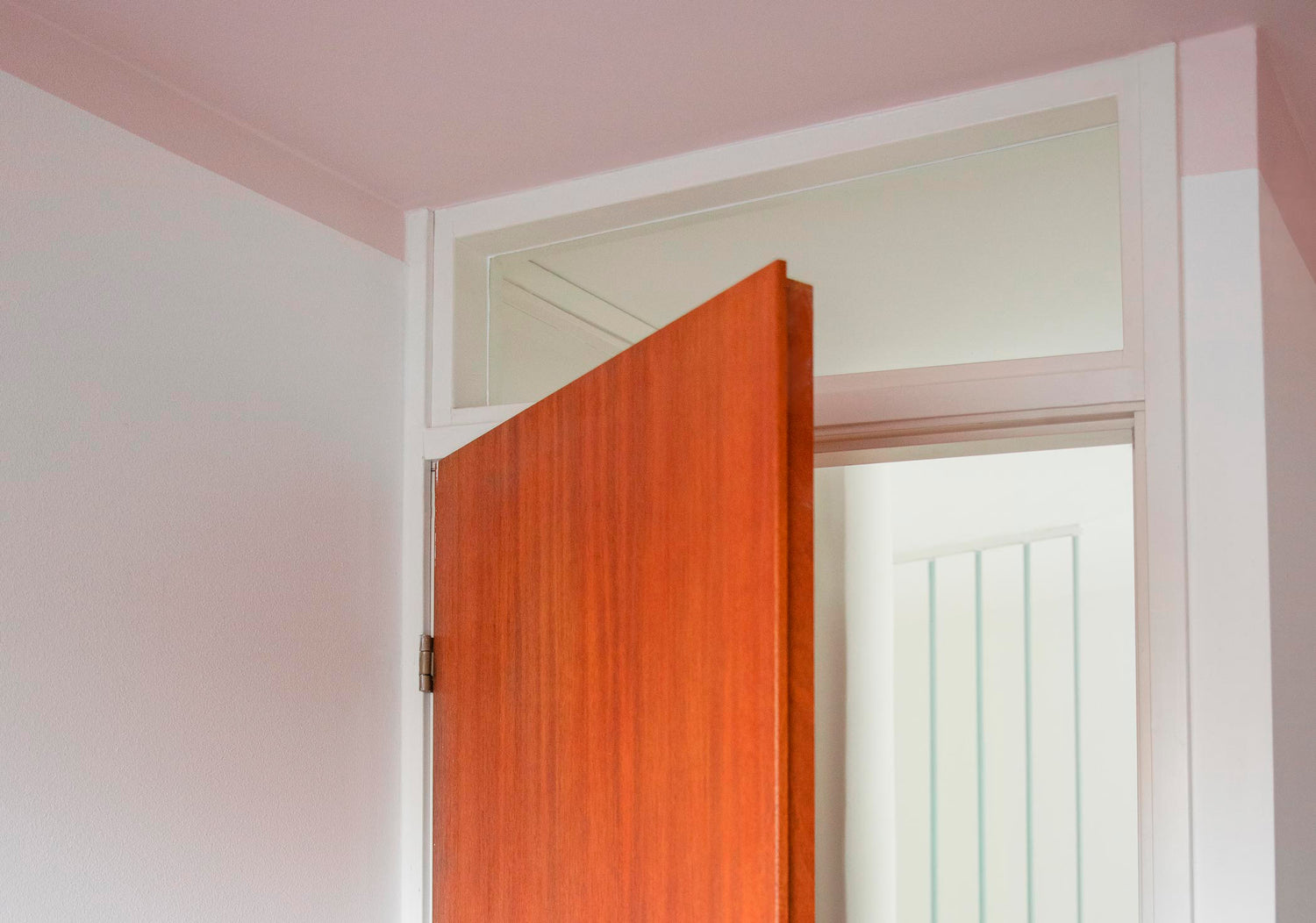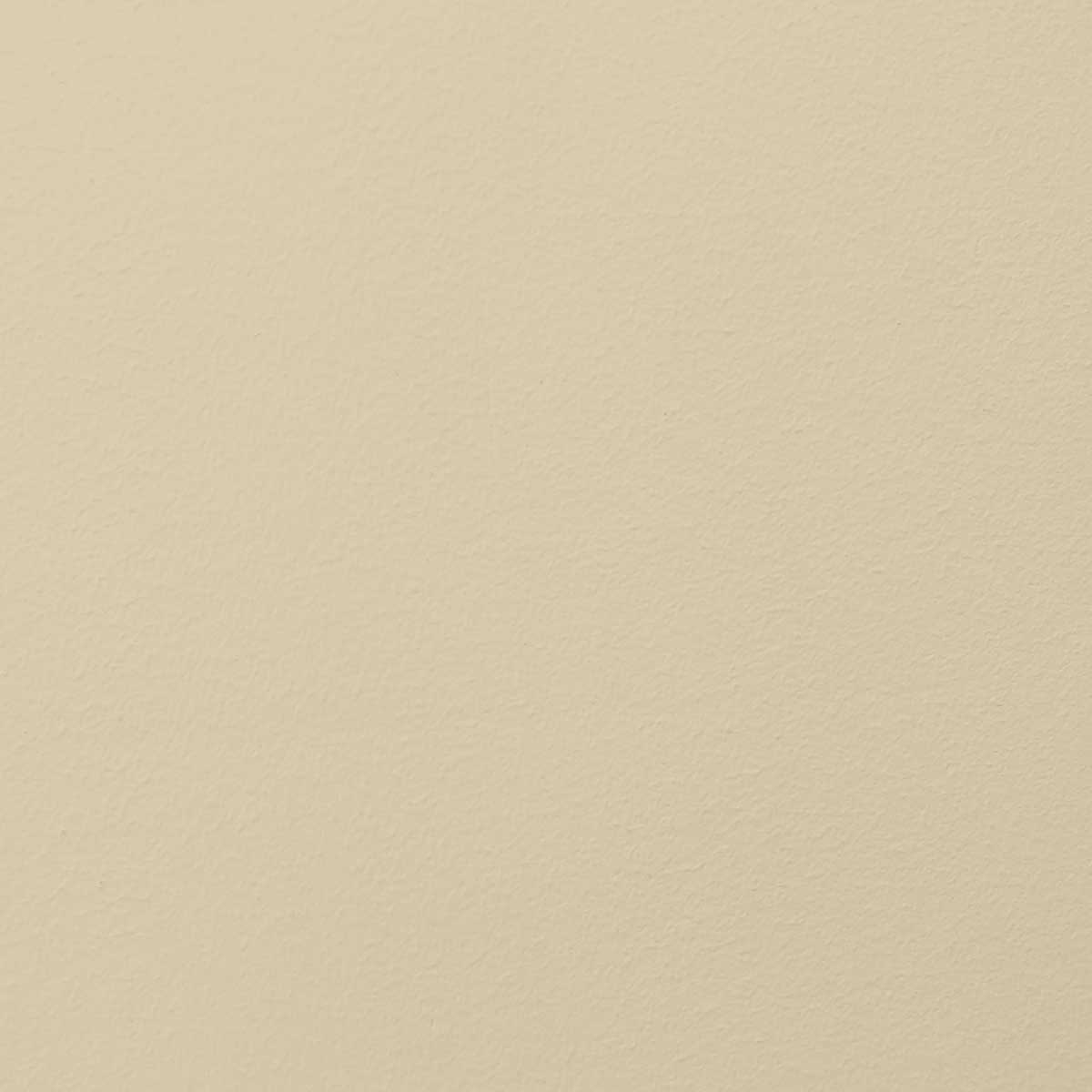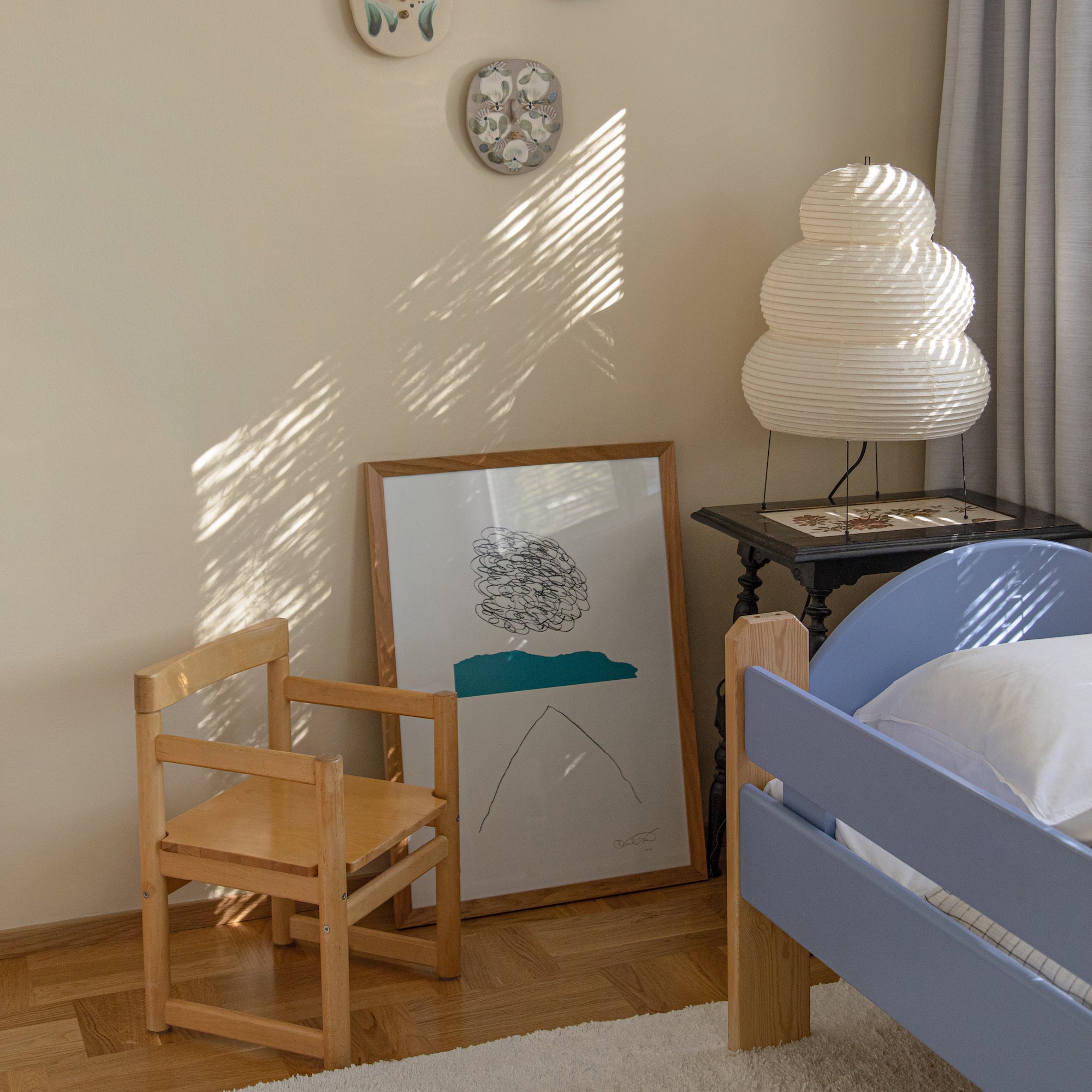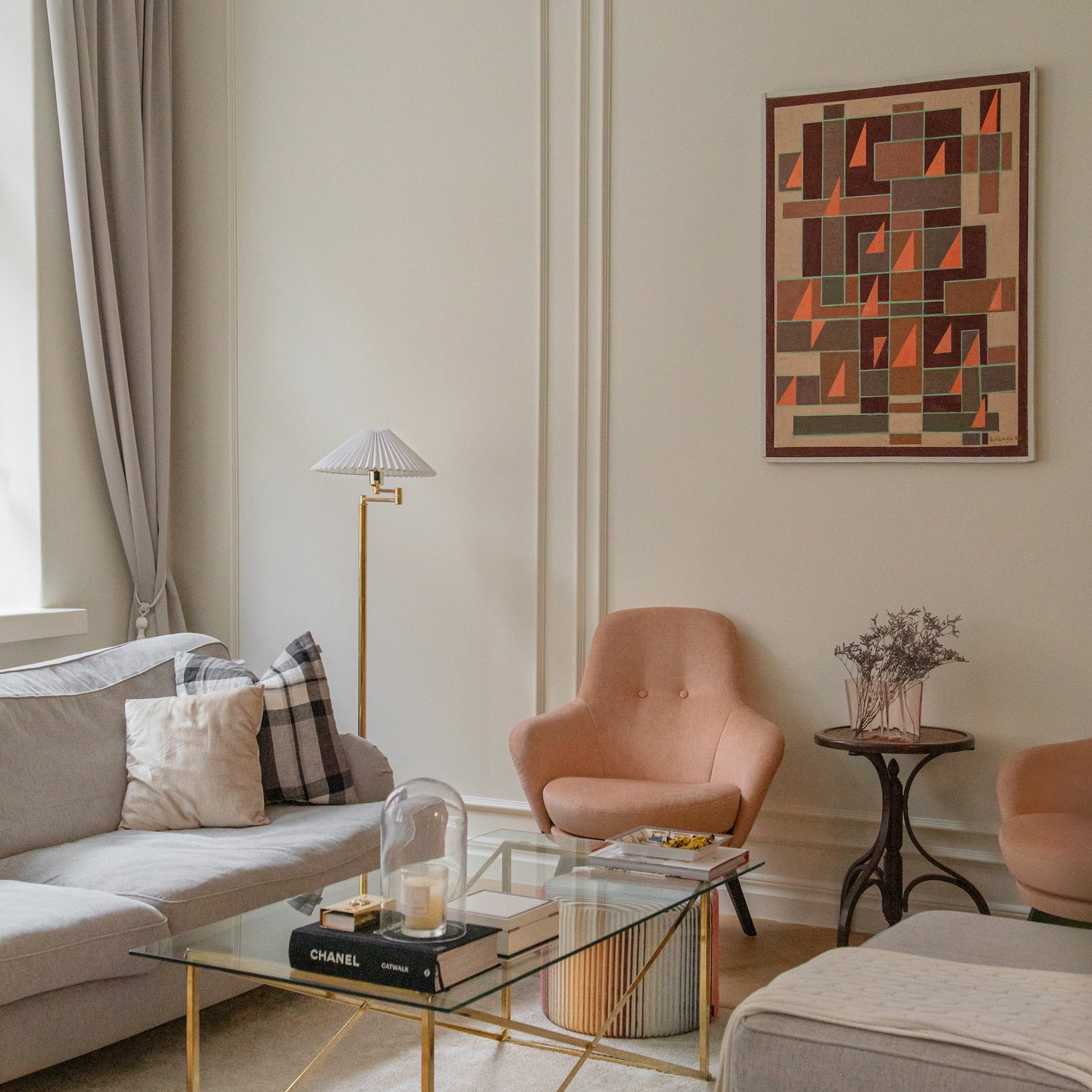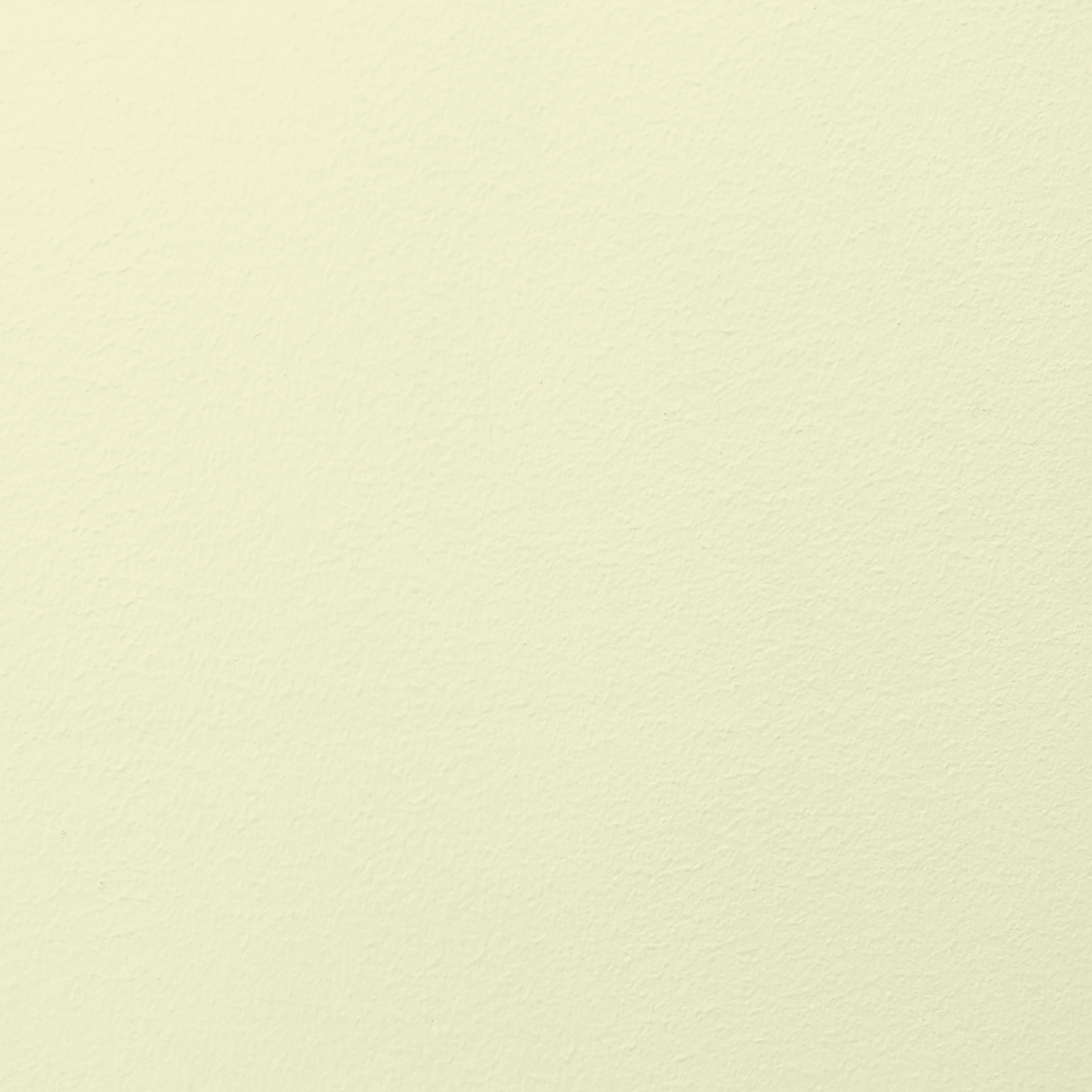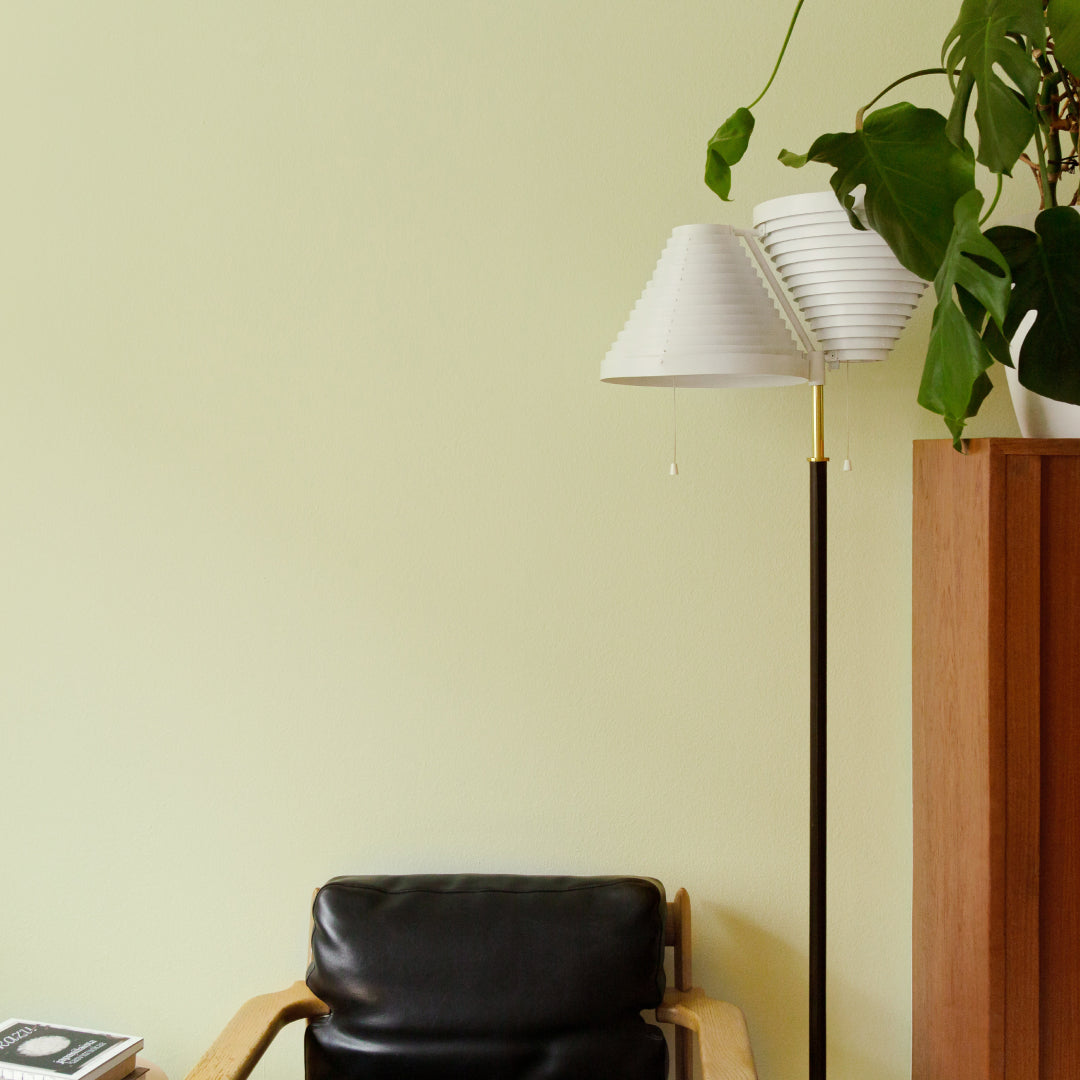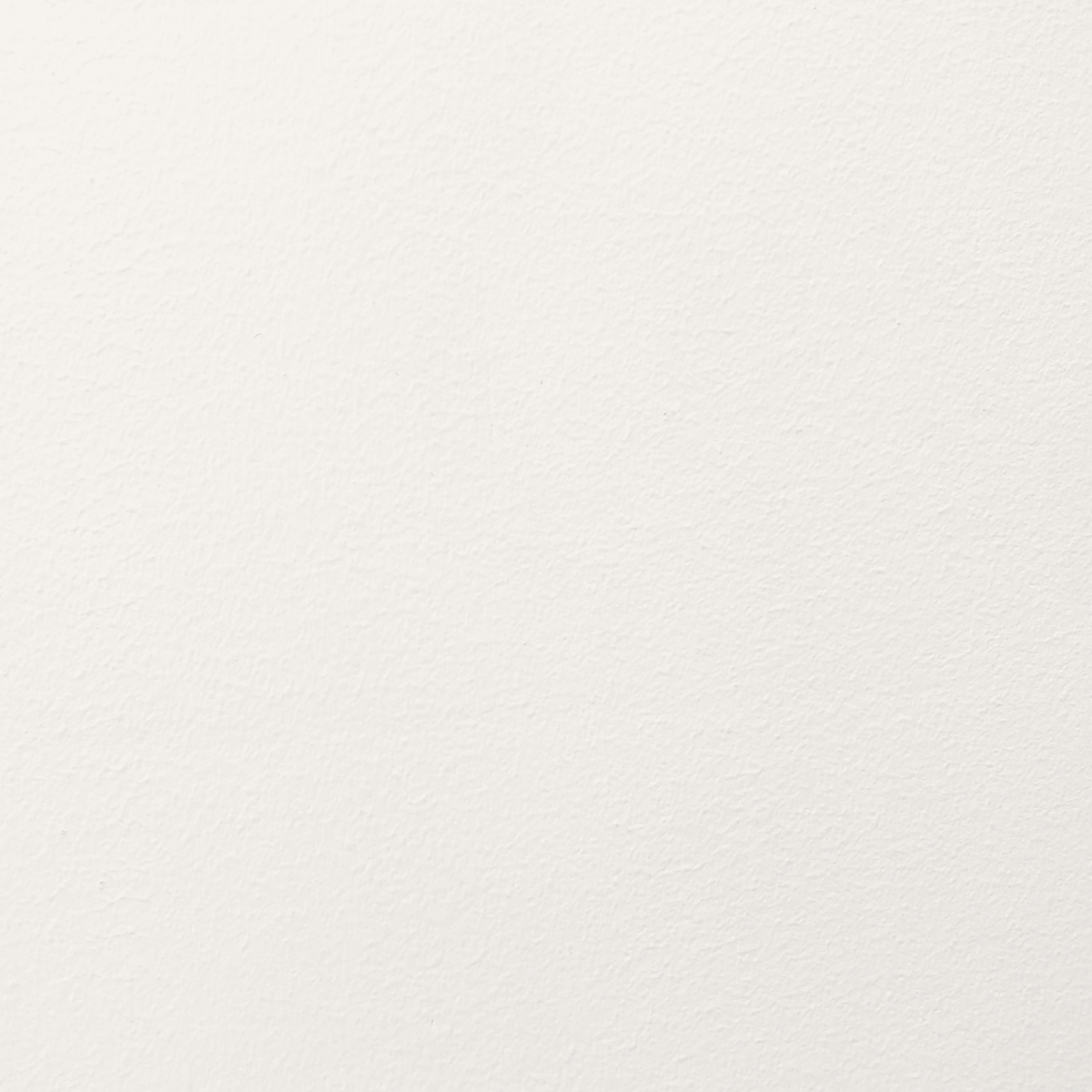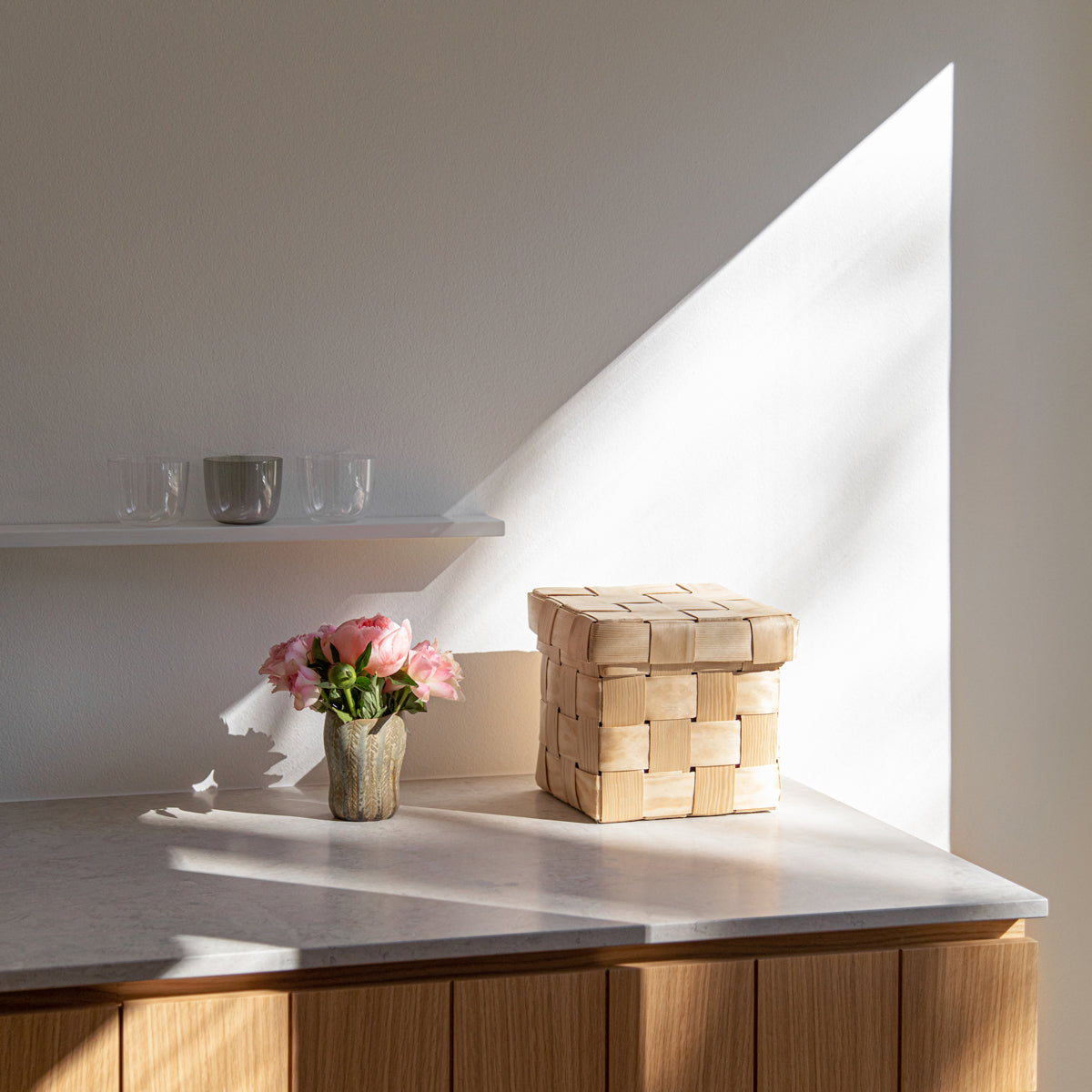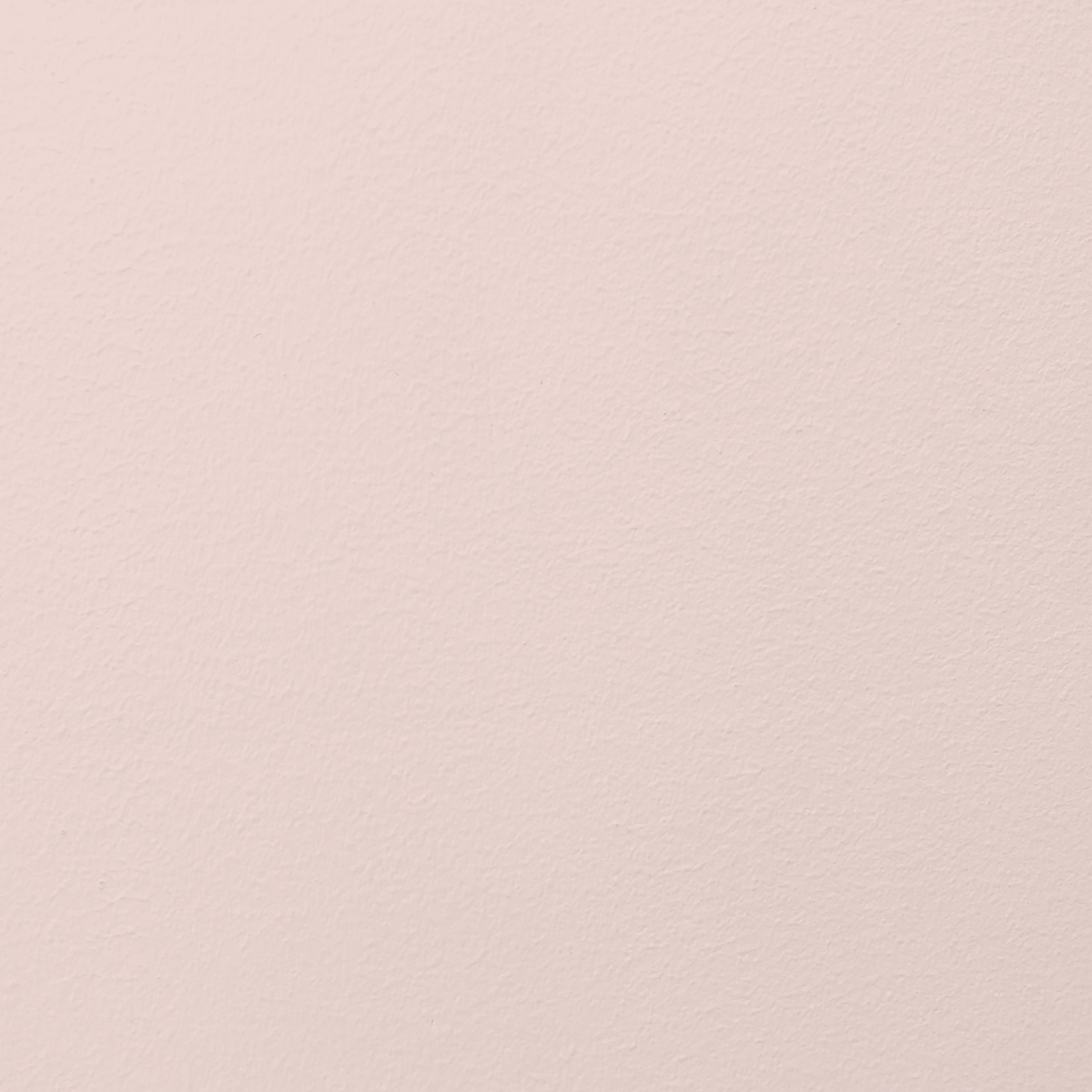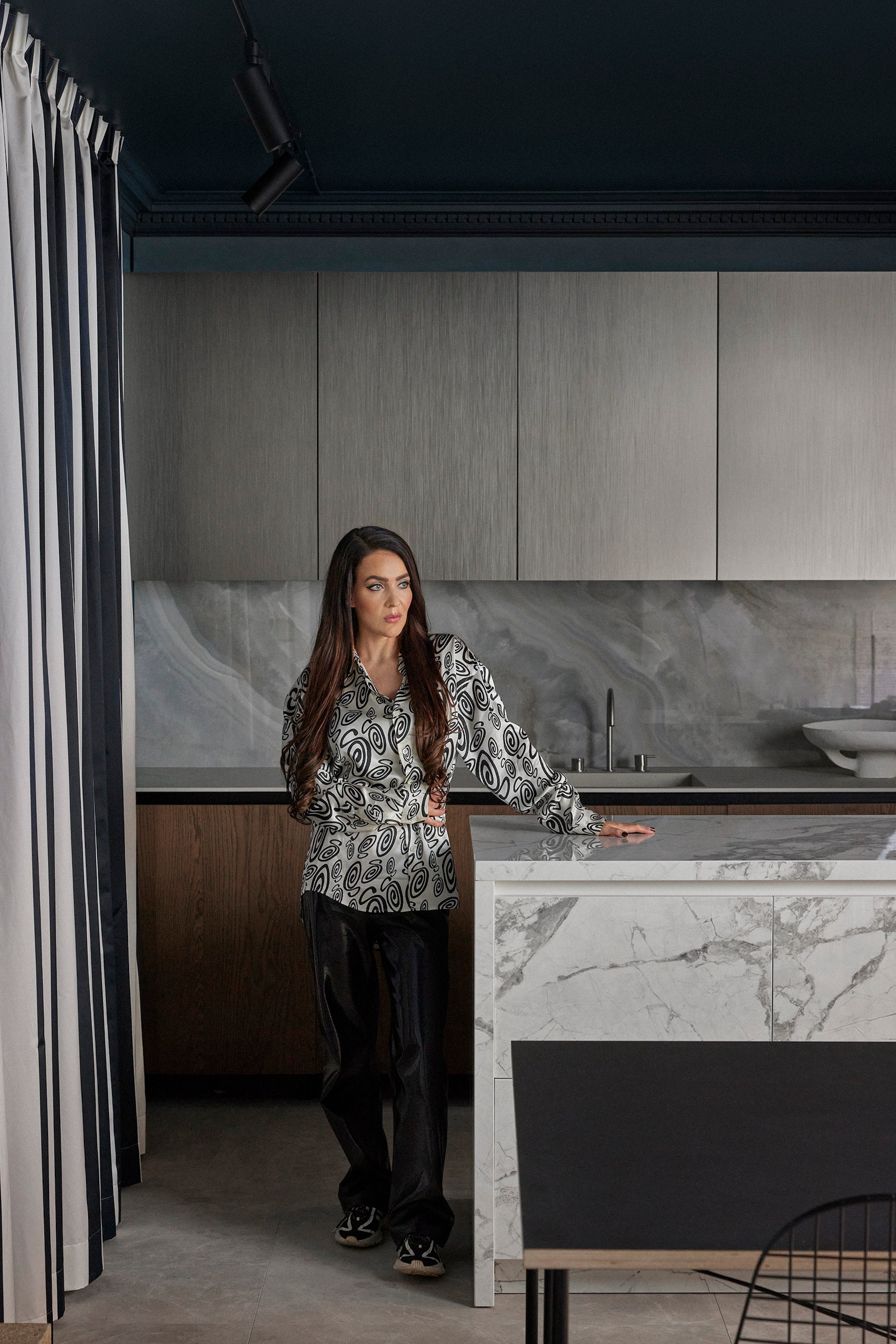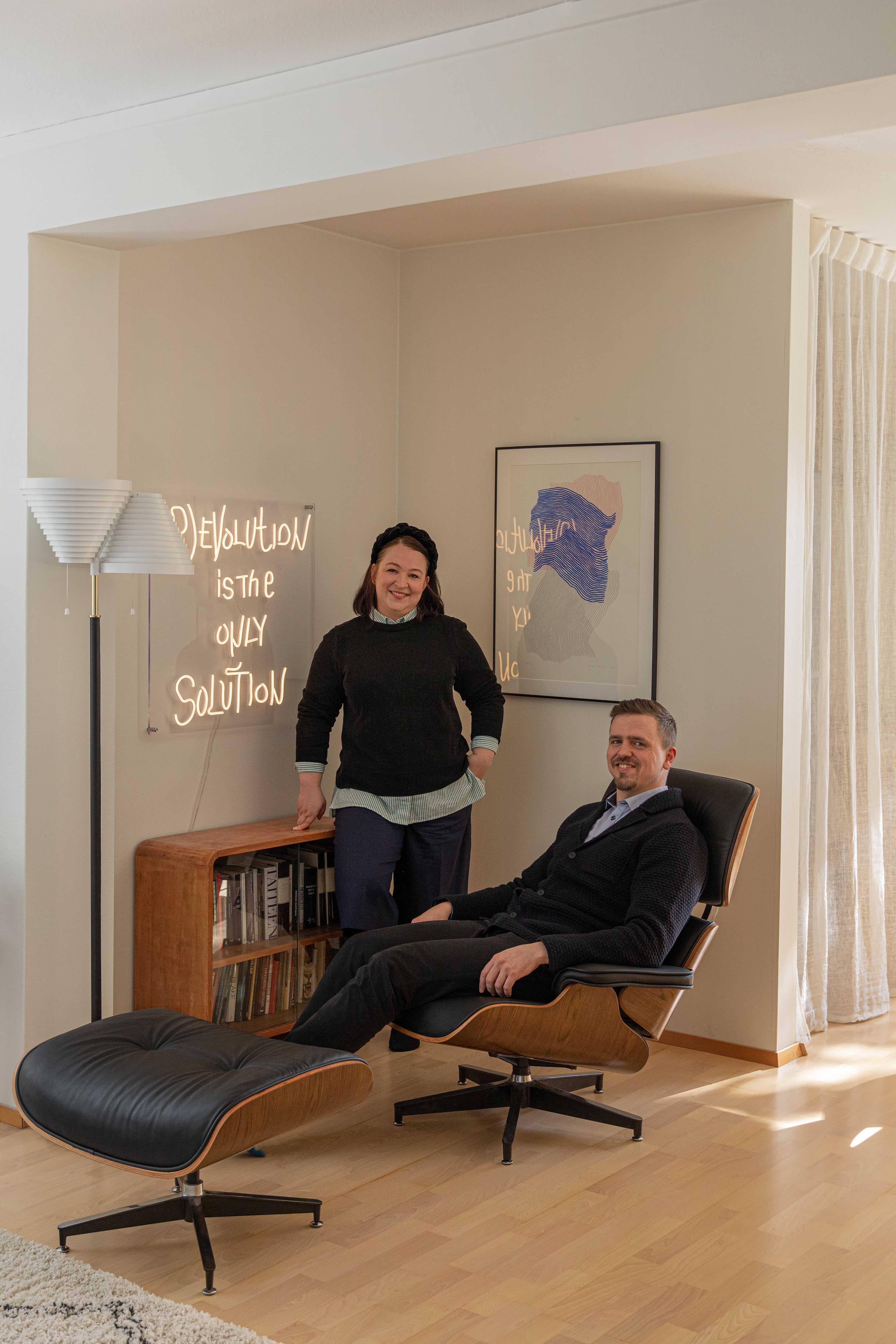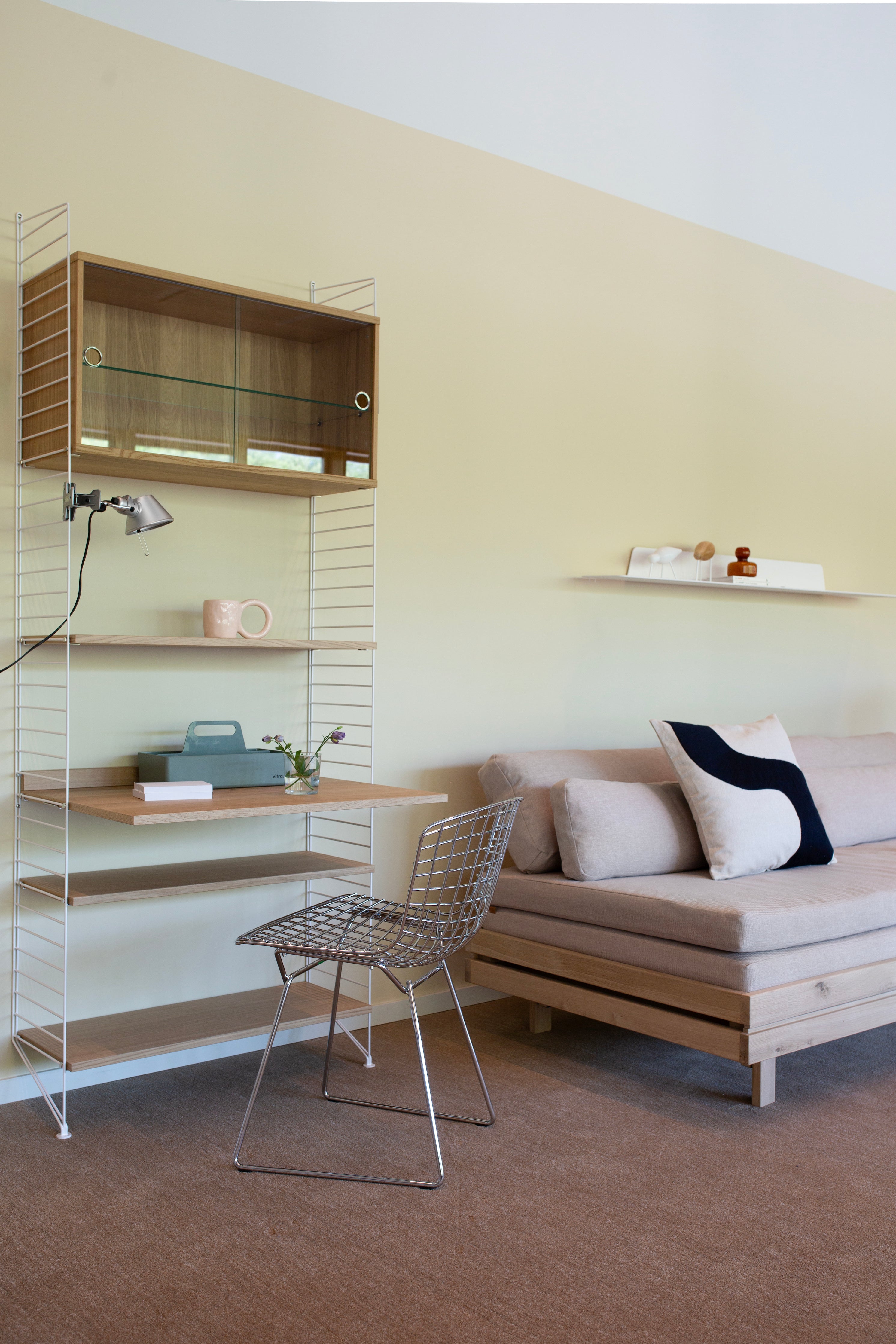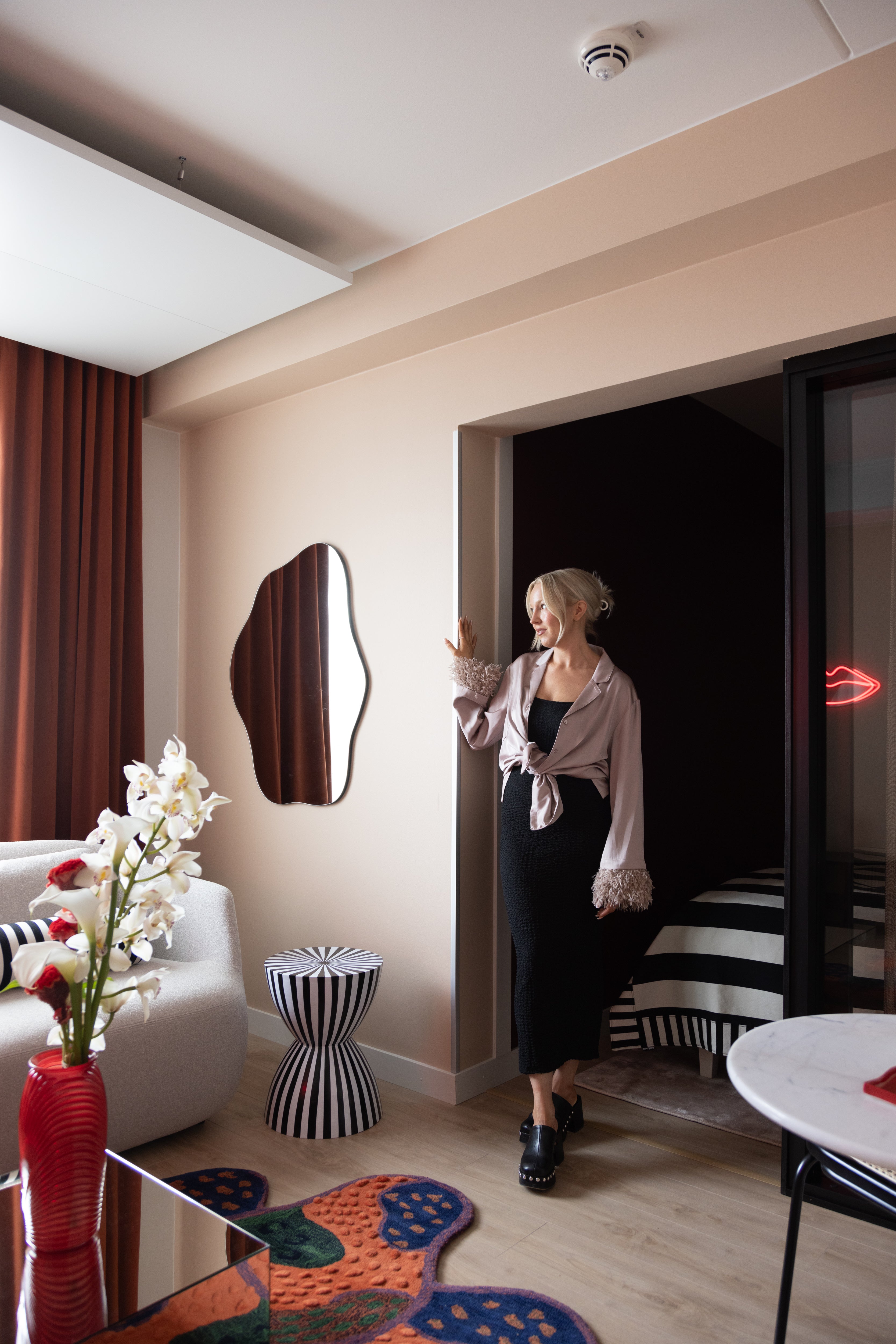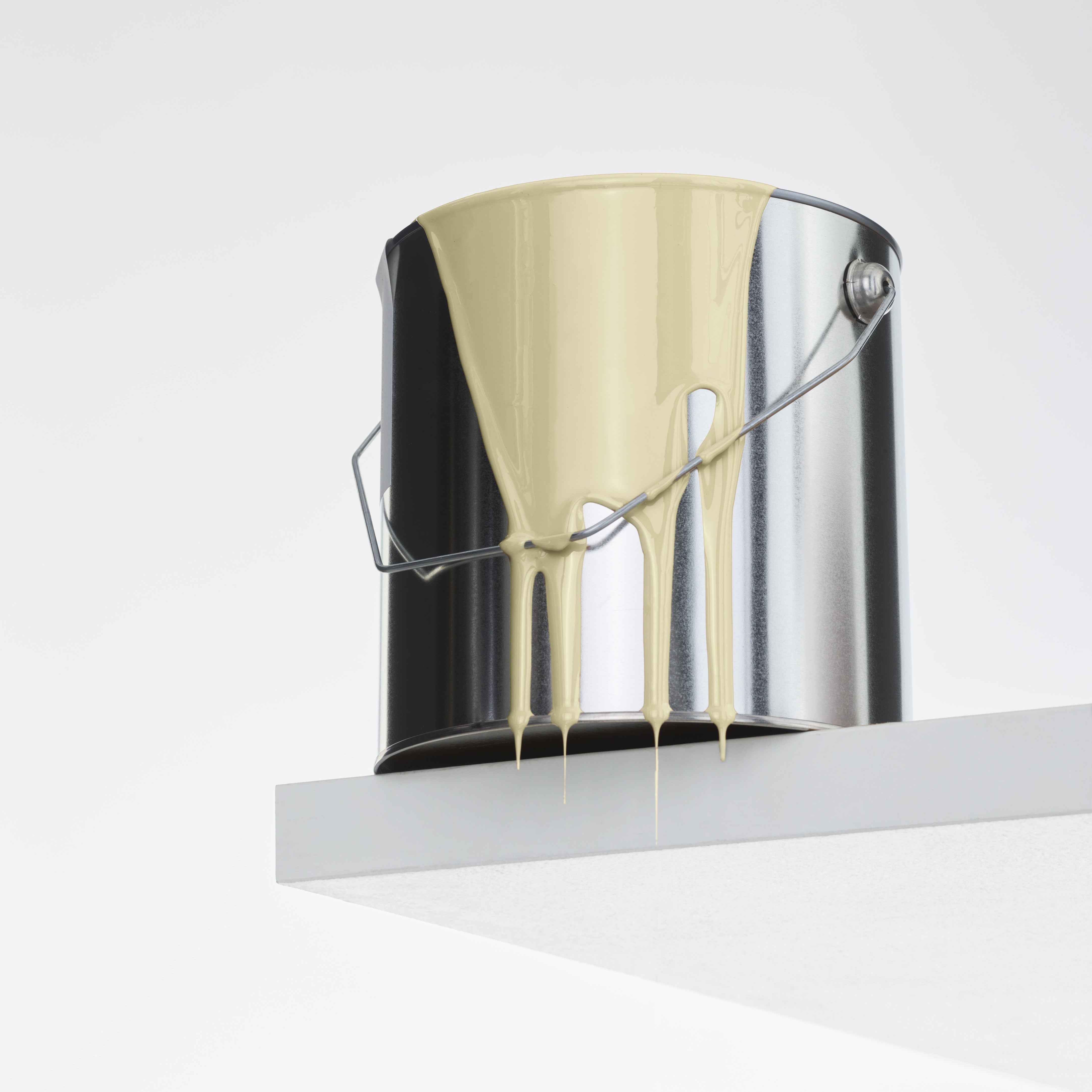When designing home interiors or choosing new paint colors, ceilings are often overlooked or thought of as being too difficult and messy.
But you might be surprised how much difference a new, rich paint color can make to the look and feel of a room. White isn't the only option either – a natural grey-blue or a crisp yellow could bring a whole new attitude to your space.
Sometimes the reason why ceilings need to be repainted is that time affects the paint surface of the ceiling – it becomes stained, faded or cracked. In this case, a fresh coat of clean paint is an easy way to freshen up the overall look of a room.
So grab a roller and admire your home from all angles!

Here's how successfully repaint your ceiling
Gather your tools and prep the space
- Roller and paintbrush
- Roll of masking tape
- Roll of protective paper or newspaper
- Paint tray
- Extension pole
- A can or more of your favorite shade of Cover Story paint
Tip! Keep it easy by ordering an EPISODE kit with your paints. We've tested and selected the highest quality painting equipment available, to ensure you get the job done.

Choose your paint
Matt paint is a great choice for all dry interior ceilings, as the matt finish hides small imperfections, reduces light reflection and won't show roller marks. For wet room ceilings, choose a gloss or semi-gloss paint.
Protect your furniture
Start by moving your furniture to another room or to a corner of the room for heavy items. Cover the furniture with an old sheet or protective paper so you don't have to remove paint stains from your favourite pieces – covering is a small effort compared to removing paint stains from a sofa!
The best way to paint the ceiling
Prepare carefully:
Preparation is as important for ceilings as it is for walls (you can read here how to prepare walls for painting).
Clean the surfaces to be painted with a damp rag if necessary. If the surface is greasy or dusty, the paint will not adhere properly.
If the surface is badly cracked or hanging loose from the ceiling, it is best to leave the painting project to professionals. If you have any questions, our customer service team is happy to help you out.

Apply masking tape to protect key areas
If you are painting the roof only, use masking tape to delimit the edges of the roof and the wall. Also remember to protect the edges of ceiling lights and fire alarms with masking tape. If possible, remove light coverings.
Get started
Paint the edges of the ceiling with a small paint roller or brush, then paint around lamps and fire alarms. This will make it easier for you to roll without hitting the walls. A small roller makes painting faster and helps you achieve an even finish.
The easiest way to paint is to use an extension arm as it saves you using a cumbersome ladder. In the larger EPISODE II supply set, you'll find a beech extension arm that will reach the ceiling and last from one painting session to the next.
Roll the paint strip by strip, rolling in the same direction over the entire surface to be painted.
Once you've painted the whole roof, put the roller and paint tray in a plastic bag and make yourself a coffee. The first coat can be painted over in 1-2 hours. After allowing the first coat to dry, re-paint the roof using the same method. If you are painting both the ceiling and the walls in the same color, start with the ceiling. While doing the ceiling, you can also paint down onto the wall about 10-20cm, which makes it easier when you get to painting the wall and also makes the border area look nice. (Click here for wall painting instructions)
If you are painting both the ceiling and the walls in the same color, start with the ceiling. While doing the ceiling, you can also paint down onto the wall about 10-20cm, which makes it easier when you get to painting the wall and also makes the border area look nice. (Click here for wall painting instructions)
Tip! It's a good idea to use a generous amount of paint, as too little paint is more likely to make the surface uneven, giving a patchy end result. You can achieve the best result by applying two coats of paint – the second coat will smooth out any unevenness in the first. 
Things to watch out for
Wooden roofs should always be protected with a finish. Cover Story's paints are suitable for painting directly onto varnished wooden surfaces. However, if you want to ensure adhesion, you can use a little sandpaper to roughen the surface.
Remove masking tape as soon as you finish painting, while the paint is still damp - it comes off easily if pulled at a 45 degree angle. As you may have already noticed, Cover Story's paints are odourless, so you can breathe easy in your own bed that same night.


